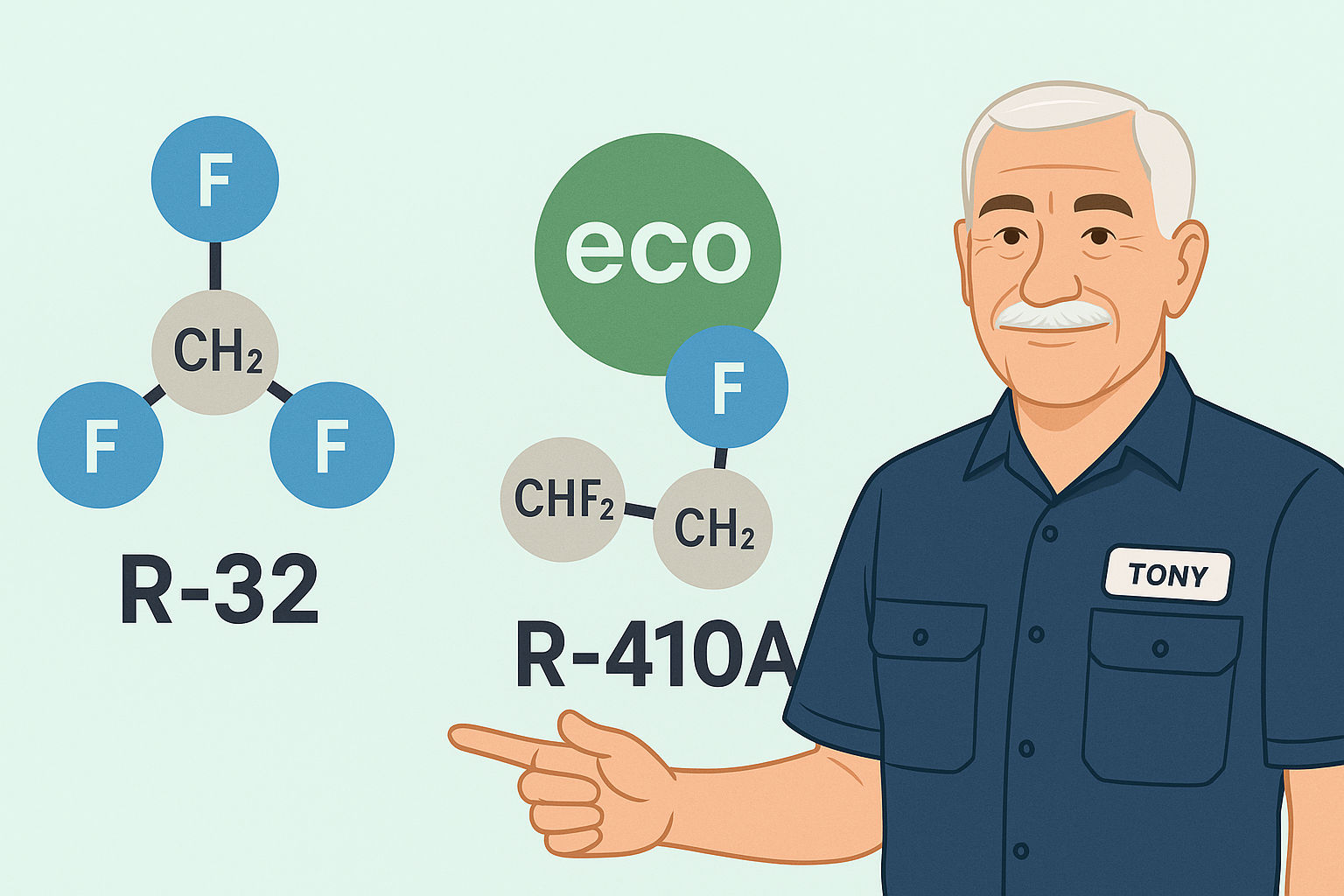👋 Hey, Tony here...
Let’s talk about something cool—literally. If you’ve been browsing AC systems (like the Goodman 5 Ton SEER2 model), you may have noticed it uses R-32 refrigerant instead of the older R-410A.
So what’s R-32, and why should you care?
Let’s break it down—HVAC style.
❄️ What Is R-32?
R-32 (difluoromethane) is a next-generation refrigerant used in newer HVAC systems. It replaces R-410A in many units due to its:
-
Lower global warming potential (GWP)
-
Higher efficiency
-
Easy recycling and reuse
In fact, many top manufacturers worldwide (Daikin, Goodman, Mitsubishi) are switching to R-32 as their standard refrigerant.
🧾 Reference:
Daikin – R-32 Refrigerant Information Center
Daikin was one of the first global adopters of R-32 and offers detailed info on performance and emissions.
🟢 Environmental Benefits
One of the biggest advantages of R-32 is its low environmental impact.
| Refrigerant | GWP (Global Warming Potential) |
|---|---|
| R-410A | 2,088 |
| R-32 | 675 |
That’s a 70% reduction in GWP compared to R-410A. And unlike R-22 (which is now banned), R-32 is fully compliant with current EPA and international regulations.
🧾 Reference:
U.S. EPA – Acceptable Refrigerants under SNAP
The U.S. EPA lists R-32 as an acceptable substitute in residential AC systems under the Significant New Alternatives Policy (SNAP) program.
⚙️ Energy Efficiency and Cost Savings
R-32 transfers heat more efficiently than R-410A. That means:
-
Less refrigerant is needed per system
-
Systems run at higher efficiency (better SEER2 ratings!)
-
Lower electricity bills over time
A unit like the 14.3 SEER2 Goodman system with R-32 offers a great balance of performance and affordability.
🧾 Reference:
Carrier – The Case for R-32
Carrier breaks down R-32’s benefits, including performance, efficiency, and environmental compliance.
🔧 Is R-32 Safe?
Absolutely. While R-32 is mildly flammable (A2L classification), it’s no risk when installed by a licensed HVAC pro (like yours truly 😉). It’s been used safely in millions of systems worldwide for over a decade.
In fact, many countries—including Japan, Australia, and the EU—have already made R-32 their refrigerant of choice.
🧾 Reference:
ASHRAE – R-32 Safety Data
ASHRAE’s classification and safety profile for R-32 refrigerant.
🏠 Tony’s Bottom Line: Should You Choose an R-32 System?
If you want:
✅ Lower environmental impact
✅ Higher system efficiency
✅ Long-term compliance
✅ Reduced refrigerant volume
…then yes, R-32 is the way to go. It’s the modern standard—and systems like this 5 Ton Goodman SEER2 model make it easy to upgrade without paying a premium.
🎯 Final Word From Tony
R-32 isn’t the future. It’s already here.
I’ve worked on thousands of systems, and trust me—switching to R-32 isn’t just smart. It’s future-proof.
Need help figuring out if your home is ready?
📩 Message me or visit The Furnace Outlet for honest advice and expert help.
In the next topic you will read about: Is a 5 Ton AC System Right for My Home? How to know if 60,000 BTUs is a smart fit—or an oversized mistake.







